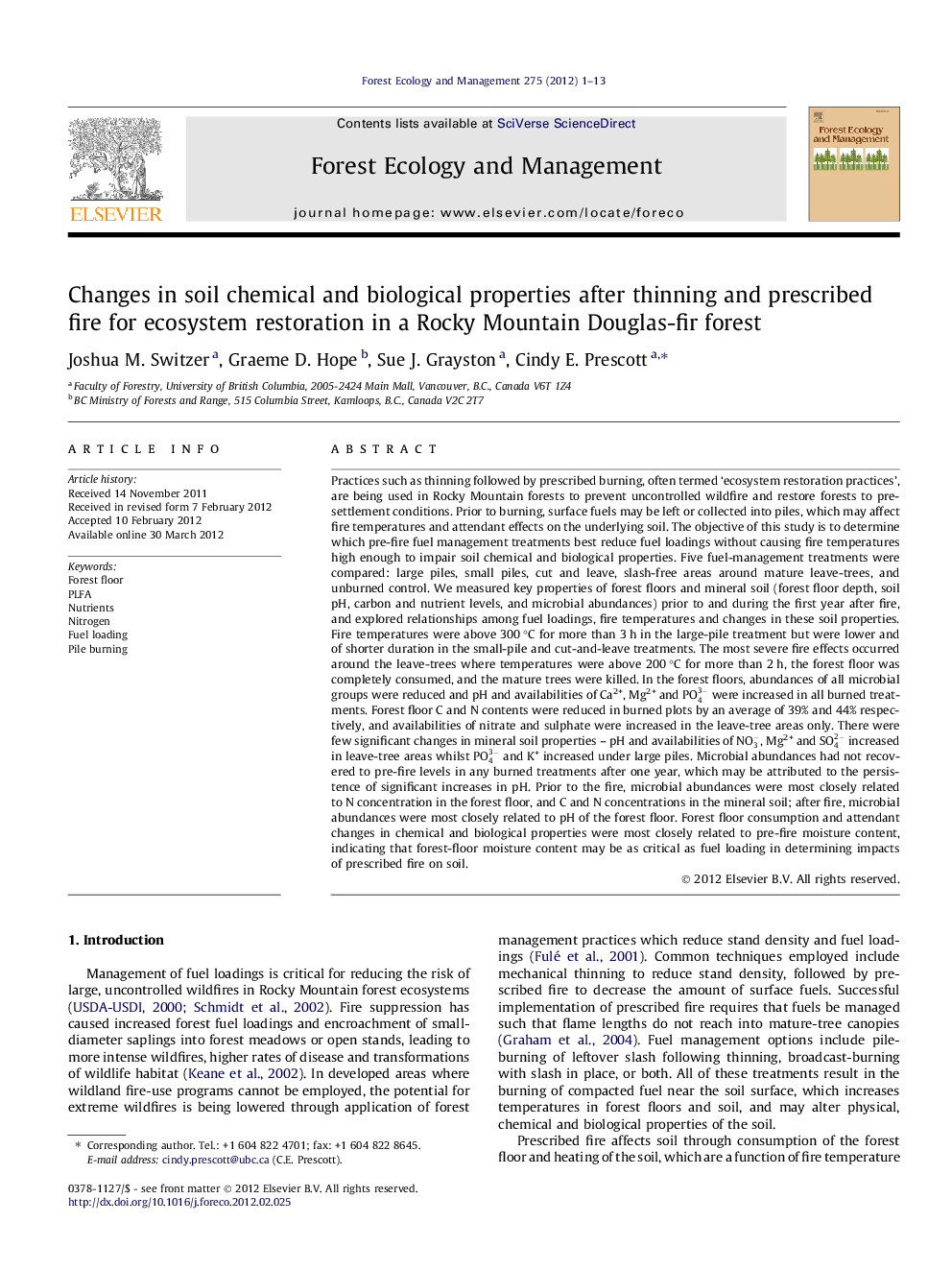| کد مقاله | کد نشریه | سال انتشار | مقاله انگلیسی | نسخه تمام متن |
|---|---|---|---|---|
| 87305 | 159244 | 2012 | 13 صفحه PDF | دانلود رایگان |

Practices such as thinning followed by prescribed burning, often termed ‘ecosystem restoration practices’, are being used in Rocky Mountain forests to prevent uncontrolled wildfire and restore forests to pre-settlement conditions. Prior to burning, surface fuels may be left or collected into piles, which may affect fire temperatures and attendant effects on the underlying soil. The objective of this study is to determine which pre-fire fuel management treatments best reduce fuel loadings without causing fire temperatures high enough to impair soil chemical and biological properties. Five fuel-management treatments were compared: large piles, small piles, cut and leave, slash-free areas around mature leave-trees, and unburned control. We measured key properties of forest floors and mineral soil (forest floor depth, soil pH, carbon and nutrient levels, and microbial abundances) prior to and during the first year after fire, and explored relationships among fuel loadings, fire temperatures and changes in these soil properties. Fire temperatures were above 300 °C for more than 3 h in the large-pile treatment but were lower and of shorter duration in the small-pile and cut-and-leave treatments. The most severe fire effects occurred around the leave-trees where temperatures were above 200 °C for more than 2 h, the forest floor was completely consumed, and the mature trees were killed. In the forest floors, abundances of all microbial groups were reduced and pH and availabilities of Ca2+, Mg2+ and PO43- were increased in all burned treatments. Forest floor C and N contents were reduced in burned plots by an average of 39% and 44% respectively, and availabilities of nitrate and sulphate were increased in the leave-tree areas only. There were few significant changes in mineral soil properties – pH and availabilities of NO3-, Mg2+ and SO42- increased in leave-tree areas whilst PO43- and K+ increased under large piles. Microbial abundances had not recovered to pre-fire levels in any burned treatments after one year, which may be attributed to the persistence of significant increases in pH. Prior to the fire, microbial abundances were most closely related to N concentration in the forest floor, and C and N concentrations in the mineral soil; after fire, microbial abundances were most closely related to pH of the forest floor. Forest floor consumption and attendant changes in chemical and biological properties were most closely related to pre-fire moisture content, indicating that forest-floor moisture content may be as critical as fuel loading in determining impacts of prescribed fire on soil.
► Prescribed fire had minimal effects on mineral soil properties.
► Microbial abundance was reduced in forest floors in all burned treatments.
► pH, Ca2+, Mg2+ and PO43- increased in forest floors in all burned treatments.
► Fire temperatures and effects were greatest in large-pile and leave-tree treatments.
► Pre-fire forest-floor moisture influenced prescribed-fire impact on soil properties.
Journal: Forest Ecology and Management - Volume 275, 1 July 2012, Pages 1–13